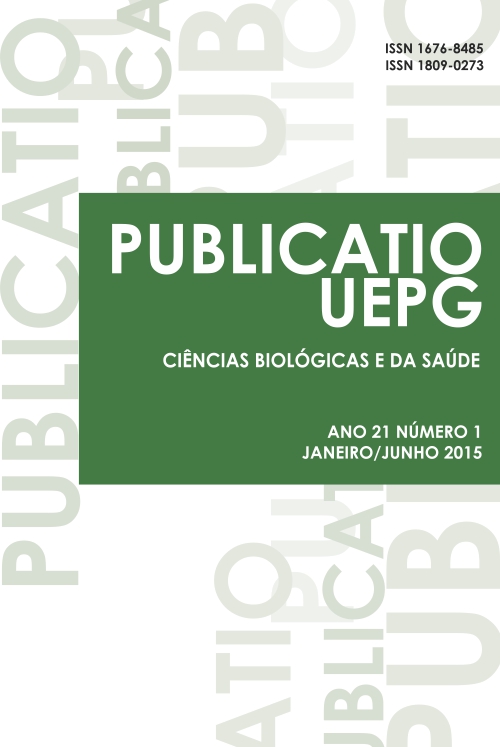SCIENTOMETRICS ANALYSIS ON THE USE OF MOLECULAR MARKERS IN STUDIES OF THE SCIAENIDAE FAMILY (TELEOSTEI: PERCIFORMES).
DOI:
https://doi.org/10.5212/publicatio%20uepg.v21i1.7669Palavras-chave:
Bibliometrics. Mitochondrial DNA. Nuclear DNA. Genes. Sciaenid species.Resumo
The Sciaenidae family belongs to the order of the Perciformes with species distributed in The Indian, Atlantic and Pacific Oceans and also in continental inland waters. The phylogenetic and taxonomy relationships of several genres and species are still controversial. Morphological and molecular studies have been undertaken to identify and classify correctly the sciaenid species and estimate their phylogenetic position. Mitochondrial DNA and nuclear DNA markers have been widely used in molecular studies. Since concern in monitoring scientific production is increasing, this study assessed quantitatively research works that employed molecular markers in studies of the Sciaenidae family, through the use of already published papers. The 42 papers analyzed on this study showed that the number of publications has been increasing over the past few years, but still few species have been studied so far. Most of the studies use mitochondrial markers only and aim at estimating the phylogenetic relationships. Results show that Sciaenidae phylogeny is still to be resolved. We suggest further researches with understudied species, especially more comprehensive analysis with molecular data associated with morphological studies.
Downloads
Publicado
Edição
Seção
Licença

Este obra está licenciado com uma Licença Creative Commons Atribuição 4.0 Internacional.
Esta licença permite que outros distribuam, remixem, adaptem e criem a partir do seu trabalho, mesmo para fins comerciais, desde que lhe atribuam o devido crédito pela criação original. Este posicionamento está de acordo com as recomendações de acesso aberto da Budapest Open Access Initiative (BOAI).


